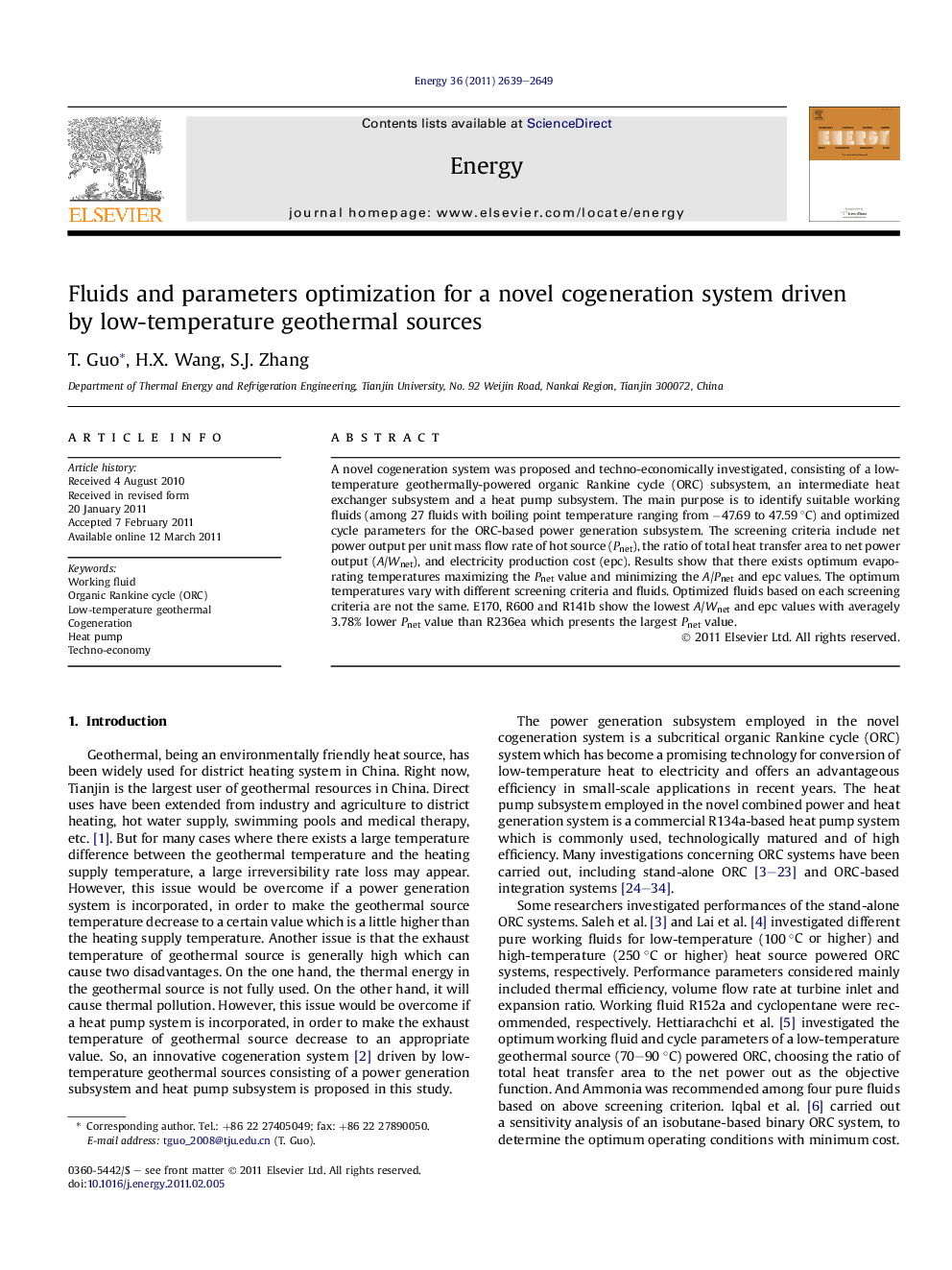| Article ID | Journal | Published Year | Pages | File Type |
|---|---|---|---|---|
| 1734495 | Energy | 2011 | 11 Pages |
A novel cogeneration system was proposed and techno-economically investigated, consisting of a low-temperature geothermally-powered organic Rankine cycle (ORC) subsystem, an intermediate heat exchanger subsystem and a heat pump subsystem. The main purpose is to identify suitable working fluids (among 27 fluids with boiling point temperature ranging from −47.69 to 47.59 °C) and optimized cycle parameters for the ORC-based power generation subsystem. The screening criteria include net power output per unit mass flow rate of hot source (Pnet), the ratio of total heat transfer area to net power output (A/Wnet), and electricity production cost (epc). Results show that there exists optimum evaporating temperatures maximizing the Pnet value and minimizing the A/Pnet and epc values. The optimum temperatures vary with different screening criteria and fluids. Optimized fluids based on each screening criteria are not the same. E170, R600 and R141b show the lowest A/Wnet and epc values with averagely 3.78% lower Pnet value than R236ea which presents the largest Pnet value.
►A new power and heat cogeneration system using low-temperature geothermal sources was proposed and techno-economically investigated. ►It consisted of an organic Rankine cycle (ORC) subsystem, an intermediate heat exchanger subsystem and a heat pump subsystem. ►Suitable working fluids among 27 pure fluids and optimized cycle parameters for the ORC subsystem were identified with three different screening criteria. ►Different screening criteria led to different fluid and cycle parameter recommendations. ►E170, R600 and R141b presented better performances comprehensively.
